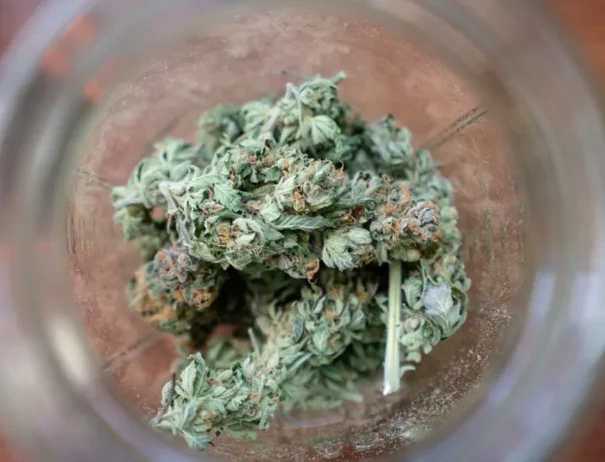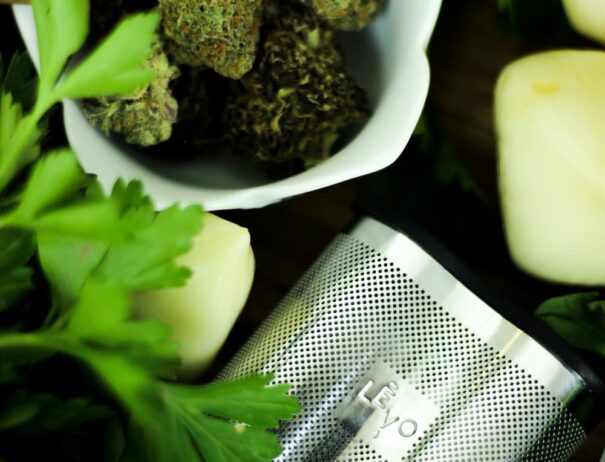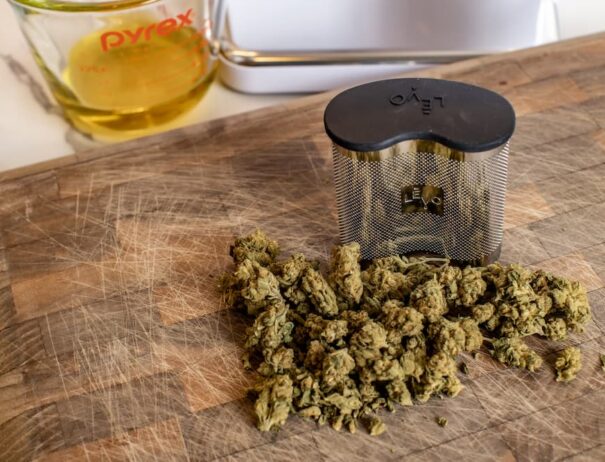Your Guide to Decarboxylating
Many of those new to making edibles at home may have experienced the trial and error of getting the recipe just right. That includes exactly how to incorporate marijuana in the recipe. You may have just added some flowers to the recipe thinking that would provide the psychoactive effect as the store-bought edibles you’ve enjoyed in the past. But, adding herb like another dry ingredient won’t create the edible you want. So, if simply mixing in medicinal flower to the recipe won’t work, what is the missing puzzle piece to make your own delicious edibles at home?
Decarboxylating
It turns out that cannabis needs to be “activated” before it will have enough THC in it to make a potent edible. The treatment is called decarboxylating, or decarbing. It involves heating the flowers for a period of time. Marijuana has very little THC in it when it is still part of the live plant, but decarbed marijuana can be potent. This is also true of CBD, or cannabidiol. The medicinal properties of CBD that are used to treat conditions like epilepsy, anxiety, and depression, must be activated with heat.
The hemp plant produces cannabinoids in an acid form, referred to as raw cannabinoids. The chemical formula of the raw form is THCA or CBDA. Decarbing either chemical removes the acid from the chemical and turns it into a neutral form of THC and CBD. Activating either chemical means they have a carboxyl group removed, hence the term decarboxylation.
The chemical bond for the acid form of either THCA or CBDA is fairly weak and can be removed with heat and time. In fact, smoking or vaping marijuana decarbs the herb very quickly, turning them into neutral THC without the acid group.
But in order to make an edible with the same effect, you have to decarb the cannabis manually. The good news is decarbing isn’t difficult and can be done in a kitchen or even a hotplate.
How to Decarb THC and CBD
THC decarbs faster than CBD, but decarbing for a longer time to get as much CBD as possible will not have a negative impact on the THC. Researchers have found that using the method below to decarb cannabis will convert 80 percent of the cannabinoids in both THC and CBD.
Tools
- Oven
- Baking sheet
- Aluminum foil or parchment paper for easy cleanup
- Cannabis
Directions
- Preheat the oven to 230 degrees Fahrenheit or 110 degrees Celsius.
- Break the cannabis into small but uniform-sized pieces. It is better not to grind it up because it could burn more easily. Grinding up the cannabis too finely will make it difficult to strain out of infusion mixtures too.
- Bake the cannabis for 40 minutes, gently stirring the herb on the baking sheet for uniform activation.
- Remove from oven and let it cool. Sometimes there is some liquid on the baking sheet, but it has no intoxicating properties and can taste bad. It would be best to remove the activated cannabis from the baking sheet while it cools.
Infusing the Activated Cannabis
The activated cannabis can be added to an edible recipe as is, but most people do not want to have the taste of the plant in their edible. The best way to handle that is to infuse butter or oil with the THC from the activated cannabis. To infuse your oil or butter, follow the instructions here:
- Put the oil in the pot and heat it gently.
- Add the decarbed cannabis a little at a time, and then simmer for 45 minutes.
- Strain the cannabis through a metal strainer, squeezing it gently with a spoon to get all the infused oil out of it.
- Now you can use the infused oil in your cooking or baking.
How Strong is Your Infused Cannabis Oil?
Most edible makers will share their creations with friends. Those friends may have a range of experiences with marijuana. Certainly, you do not want to share an edible with a friend who is inexperienced and feel that the edible was too potent, causing them not to enjoy themselves. It’s important to remember, and remind your less experienced friends, that the THC from an edible gets into your bloodstream at a slower rate than when it is smoked or vaped.
To ensure you have a better idea of the potency in your edibles, we want to discuss how to calculate the cannabinoid content of your infusion so you can make recommendations about how much your friends should consume.
This method of calculating potency requires that you know how much THC and CBD are in your cannabis. Most marijuana retail outlets and dispensaries will advertise the potency for each strain. They may not know about CBD, but a rule of thumb is that there is 30 percent more CBD than THC in most plants.
The Calculation
Below are the formulas and calculations that will help determine the THC, CBD, and overall potency of your activated cannabis.
- [Number of grams of cannabis] x [cannabinoid percentage] = the number of grams of cannabinoids
- [Number of grams of cannabinoids] x [1000] = the number of milligrams of cannabinoids.
- [Number of milligrams] x .8 [the amount of cannabinoids in the infusion] = 80 percent of the THC and CBD in the oil
Based on the formulas above, here are some examples of the numerical examples based on seven grams of cannabis with a 10 percent THC and 13 percent CBD content.
THC Content:
- Seven grams cannabis x 10 percent = .7g THC
- .7 x 1000 = 700mg THC
- 700 x .8 = 560mg decarbed THC
CBD Content:
- Seven grams x 13 percent = .91g CBD
- .91 x 1000 = 910mg CBD
- 9.10 x .8 = 728mg decarbed CBD
This calculation determines the total amount of THC and CBD in the infusion. You can use as much of the infusion as it seems prudent. It will take some experience to have a sense of how much infused oil to add to a recipe so that everyone has a good time but doesn’t feel like they’ve had too much of a good thing.
One way to work with inexperienced users to see how much edible they should consume would be to simply smear a spoonful of the oil on a cookie and have them eat it, then wait an hour or so to see if they want more or if it was just right.

Get Your Free eBook!
Download our FREE resource, The Ultimate Edibles Guidebook, full of recipes, infusion tips and everything you need to make your first batch of edibles today!



